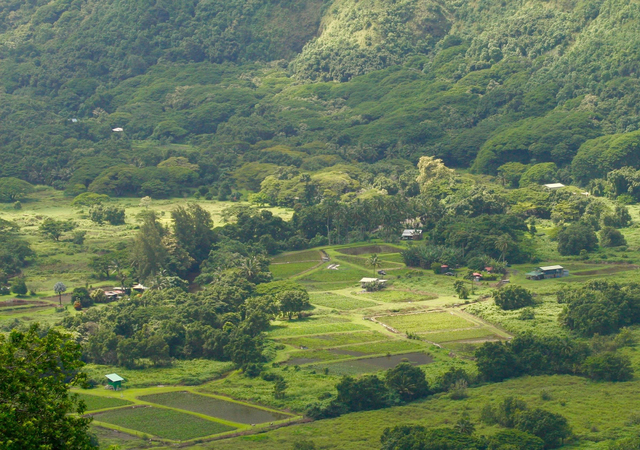A bill allowing the “little guy” to engage in agricultural tourism without going through a complicated and costly permitting process faces another round of changes in the County Council Planning Committee following council concerns Tuesday. ADVERTISING A bill allowing the
A bill allowing the “little guy” to engage in agricultural tourism without going through a complicated and costly permitting process faces another round of changes in the County Council Planning Committee following council concerns Tuesday.
Bill 117, which the council has mulled in some form or another for almost five years, was postponed until Feb. 2.
“How do we interpret and allow for tourism without harming our agriculture, which is our priority, without harming the neighborhood,” Kohala Councilwoman Margaret Wille, the bill’s current sponsor, said when describing the bill.
Concerns about tourism operations in general and how it would affect Waipio Valley in particular were major factors in the postponement. One councilman wondered if the bill was needed at all.
Puna Councilman Daniel Paleka said the current process of applying for a special permit might be all the law that’s needed.
“I’m kind of getting the feeling that we’re overkilling it with more legislation,” Paleka said.
Wille said she was trying to achieve a balance, where “even the little guys” who can’t afford going to the county planning commissions or the state Land Use Commission still have a shot at an agritourism operation. An application before the LUC can cost more than $10,000, she said.
“I was trying to provide a middle ground,” Wille said. “As much bureaucracy as we need, but no more than we need.”
The bill would create a “minor” agritourism classification to make it easier for small farmers to engage in a practice already enjoyed by large agricultural operations — giving tours to visitors, usually for a fee, and selling related products at a gift shop. Minor agritourism operations would be required to register with the county.
Minor operations would limit annual visitors to 5,000, with a maximum 100 visitors per week. A major operation would be allowed up to 30,000 visitors per year.
Major agritourism operations still would need plan approval, while minor ones would not, provided they weren’t constructing structures other than farm stands. Both types would be required to turn over financial records upon the request of the Planning Department to verify compliance.
“I hope the focus will not be on tourism, but on agriculture,” said Hilo resident Cory Harden. “We don’t always have tourists wanting to visit Hawaii, but we always have locals wanting to eat.”
Two testifiers worried about provisions allowing agritourism businesses in Waipio Valley with permission of the Planning Commission. Both asked that the valley — populated primarily by Native Hawaiians growing taro — be exempt from the new law.
Waipio farmer Jim Kane, who is active in community groups there, said traffic into the valley has reached 200 to 300 people daily, and the situation has become dangerous. Kane said residents in the valley already feel overwhelmed by visitors who traipse through private property.
“We need to get a handle on this,” Kane said. “Waipio needs to share on Waipio terms.”
Hamakua Councilwoman Valerie Poindexter agreed. She said she’s been meeting with Waipio Valley residents to see what the community wants.
“The private property issues need to be resolved before we create chaos and more safety issues,” Poindexter said.
Email Nancy Cook Lauer at ncook-lauer@westhawaiitoday.com.



